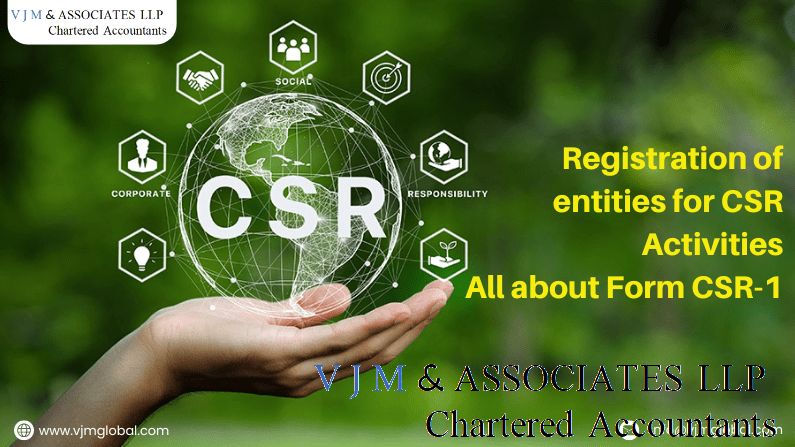
Recently, creating a company registration in India has moved online, making it easier and more accessible. The Ministry of Corporate Affairs (MCA) led these changes, which streamlined the registration process and reduced confirmation and verification time. This article discusses the company registration in India process and how entrepreneurs can benefit from digitizing processes.
The Online Revolution: MCA’s Role
The MCA reformed India’s company registration process. The whole registration process is available online at the MCA. This change has not only made the procedure simpler, but it has also drastically shortened the time needed for verification and confirmation—the average now only takes ten to fifteen days.
Starting the Process of Registration
Remotely submitting applications on the MCA website begins the registration procedure. This starts the procedure that concludes with the incorporation certificate, which proves the business’s independence. A DIN and DSC are required for the application process, along with other documentation.
Choosing the Right Name
Choosing an original and available name is crucial to company registration. Applicants must check the MCA’s company name registration for their chosen name. If the name is taken, consider alternatives. After name authorization, file the MCA portal SPICe+ form, receive DIN and DSC for directors, and submit fees and documentation.
Digital Signature Certificate (DSC) and Director Identification Number (DIN)
Obtaining a DSC is essential to register. All proposed directors and MoA and Articles of Association subscribers need a DSC. These can be obtained from certifying authorities approved by the government. A list of certified authorities is available on the MCA website, which makes the acquisition procedure easier. Another crucial prerequisite for directors is the DIN, which is acquired as part of the complete registration process.
Essential Documents for Registration
Documentation proving identity, proof of address, passport-sized photos, and other necessary information are needed for company registration. All documents must be self-attested and submitted in the most recent versions, according to stakeholders. A recent utility bill (electricity or phone), no older than two months, can also be submitted as evidence of address.
The Four-Step Registration Process
Name clearance begins with applicants checking the Ministry of Corporate Affairs (MCA) directory for available and unique company names.
- This first step prepares for a smooth registration. The second step is obtaining a director’s DSC and DIN. These are needed to file papers on the MCA portal.
- Directors receive a DIN and a DSC from government-approved certifying agencies. This phase demonstrates the dedication to digital practices since everything happens online without requiring a physical presence at any one place.
- The registration process proceeds to the submission of the SPICe+ form on the MCA portal after the receipt of the DIN and DSC. This extensive form streamlines the submission process by combining multiple disclosures and applications pertaining to the company. Entrepreneurs can complete the form quickly and easily, filling up the required fields and following the instructions.
- The last stage entails sending in the necessary paperwork and the appropriate payment. These papers usually contain passport-sized photos, evidence of identity, proof of address, and other pertinent information. All documents must be self-attested and submitted in the most recent versions, according to stakeholders. Recent utility bills that are no older than two months, such as phone or power bills, also function as proof of address.
- Due to the digital nature of this process, entrepreneurs can complete the registration process entirely online, improving accessibility and efficiency. Modernization by the MCA aligns with the removal of geographical limits and physical presence.
- After verification, applicants obtain an Incorporation Certificate, PAN, and TAN. How quickly candidates get their documentation emphasizes the speed of this four-phase registration process.
- The verification and confirmation processes take about 10 days, which highlights how quick the updated registration system is.
This reduces the administrative load for business owners and creates an atmosphere that is favourable for the prompt formation of companies in India. The four-step registration process is essentially evidence of the Indian business registration landscape’s dedication to digitization, accessibility, and efficiency.
VJM & Associates LLP: A Noteworthy Player
In the constantly changing field of business registration, VJM & Associates LLP is a notable participant. Dedicated to enabling a seamless registration procedure, they utilize the digital platforms offered by the MCA. By the updated registration procedures, VJM & Associates LLP provides advice and assistance to entrepreneurs as they set out on their company journey.
Conclusion
Company registration in India procedures have gone digital, which is a big step in the direction of a more accessible and effective corporate climate. The streamlined processes implemented by the MCA have enabled entrepreneurs to launch their businesses with more ease. VJM & Associates LLP shows up as a trustworthy partner as we traverse this digital horizon, making sure business owners are prepared to take advantage of the benefits of a digital registration environment. There has never been a more promising or approachable path to becoming an entrepreneur.




